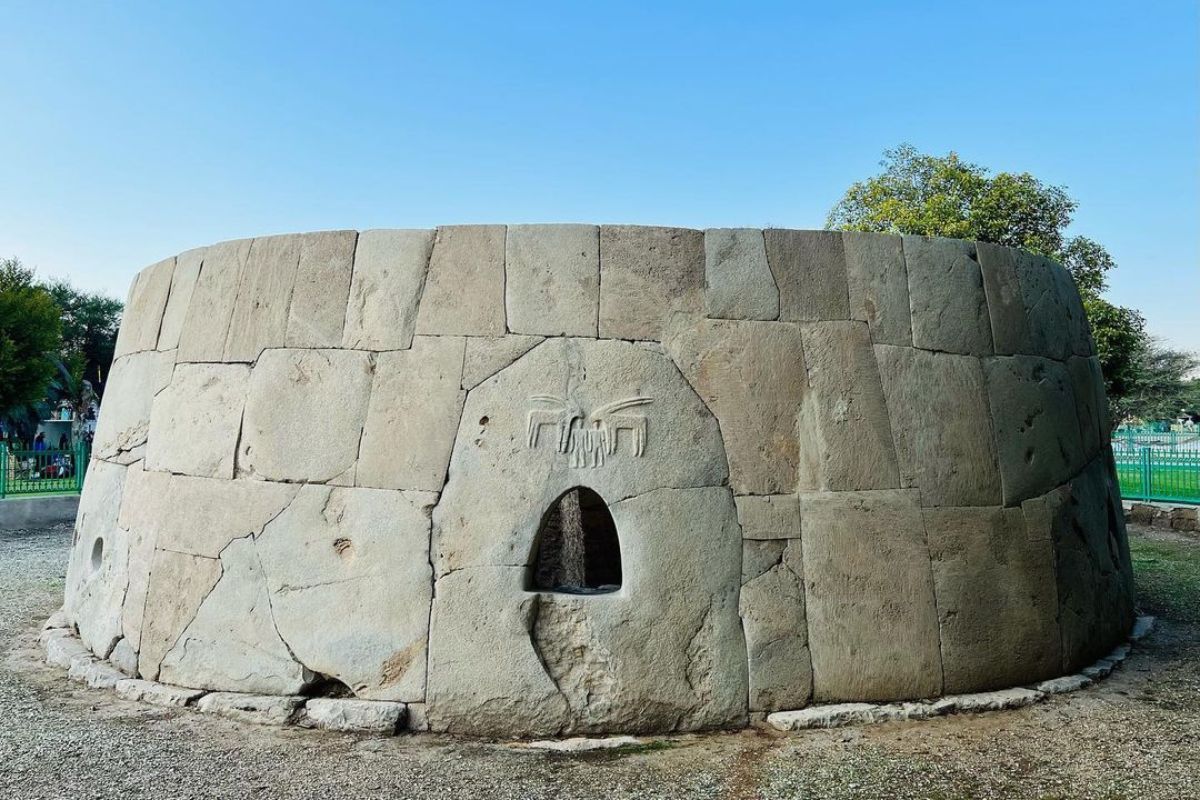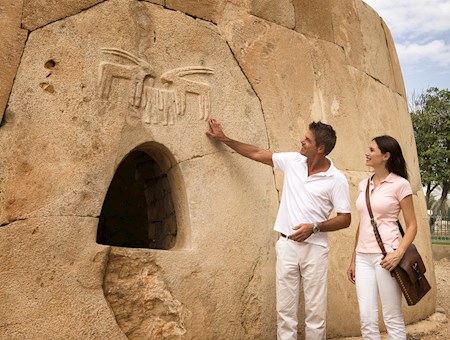The Hili Grand Tomb in Al Ain, dating back to around 2500 BCE, is a striking representation of the Bronze Age Umm Al Nar culture. This circular tomb, constructed with expertly shaped stone blocks, reflects advanced architectural skills and communal values.
Architectural Mastery
With a diameter of 12 meters, the tomb is believed to have served as a communal burial site for up to 600 individuals, illustrating a society that valued shared cultural and ritual practices. The meticulous stone construction demonstrates a high level of craftsmanship that was exceptional for its time.

Cultural and Economic Connections
Archaeological findings, including pottery, shell jewelry, and metal tools, indicate that the Umm Al Nar people engaged in vibrant trade networks with regions like the Indus Valley and Mesopotamia. These artifacts highlight their strategic position in ancient trade routes and suggest a society that was not only economically active but also culturally interconnected.

Ritual Significance
The tomb’s central location within Hili Archaeological Park points to its potential role as a ritual center for community gatherings and ceremonies. The open design may have facilitated public access, reinforcing its importance in communal and spiritual life, emphasizing their reverence for the dead and the significance of ancestry.

Lasting Legacy
As a designated UNESCO World Heritage Site, the Hili Grand Tomb serves as a vital link to understanding early Arabian societies. It encapsulates the technological advancements, social organization, and cultural practices of the Umm Al Nar civilization, offering invaluable insights into their lives and connections. Continued research at this site promises to enrich our understanding of the intricate tapestry of Bronze Age cultures in the Arabian Peninsula.

